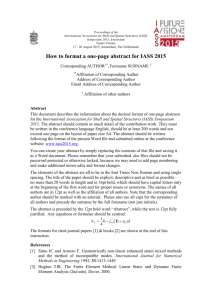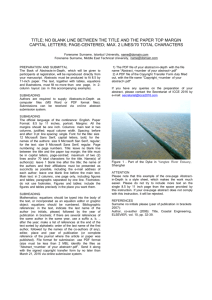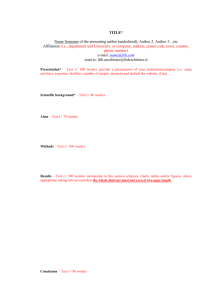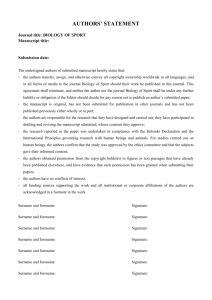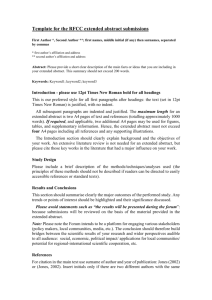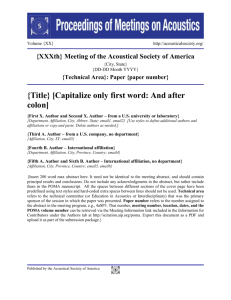the ISOFF abstract format
advertisement
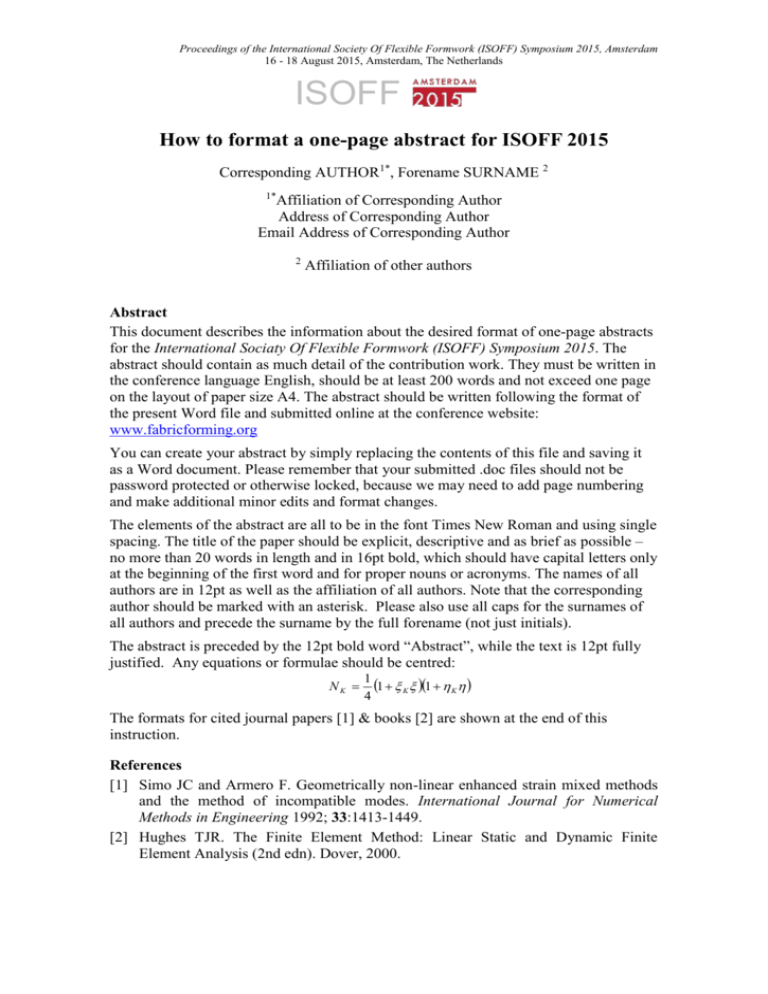
Proceedings of the International Society Of Flexible Formwork (ISOFF) Symposium 2015, Amsterdam 16 - 18 August 2015, Amsterdam, The Netherlands ISOFF How to format a one-page abstract for ISOFF 2015 Corresponding AUTHOR1*, Forename SURNAME 2 1* Affiliation of Corresponding Author Address of Corresponding Author Email Address of Corresponding Author 2 Affiliation of other authors Abstract This document describes the information about the desired format of one-page abstracts for the International Sociaty Of Flexible Formwork (ISOFF) Symposium 2015. The abstract should contain as much detail of the contribution work. They must be written in the conference language English, should be at least 200 words and not exceed one page on the layout of paper size A4. The abstract should be written following the format of the present Word file and submitted online at the conference website: www.fabricforming.org You can create your abstract by simply replacing the contents of this file and saving it as a Word document. Please remember that your submitted .doc files should not be password protected or otherwise locked, because we may need to add page numbering and make additional minor edits and format changes. The elements of the abstract are all to be in the font Times New Roman and using single spacing. The title of the paper should be explicit, descriptive and as brief as possible – no more than 20 words in length and in 16pt bold, which should have capital letters only at the beginning of the first word and for proper nouns or acronyms. The names of all authors are in 12pt as well as the affiliation of all authors. Note that the corresponding author should be marked with an asterisk. Please also use all caps for the surnames of all authors and precede the surname by the full forename (not just initials). The abstract is preceded by the 12pt bold word “Abstract”, while the text is 12pt fully justified. Any equations or formulae should be centred: NK 1 1 K 1 K 4 The formats for cited journal papers [1] & books [2] are shown at the end of this instruction. References [1] Simo JC and Armero F. Geometrically non-linear enhanced strain mixed methods and the method of incompatible modes. International Journal for Numerical Methods in Engineering 1992; 33:1413-1449. [2] Hughes TJR. The Finite Element Method: Linear Static and Dynamic Finite Element Analysis (2nd edn). Dover, 2000.
